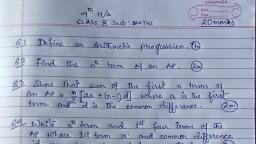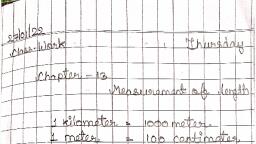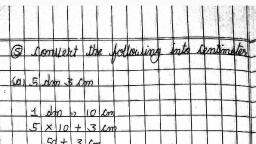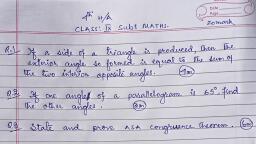Question 1 :
If $\Delta_1=\begin{vmatrix} 1 & 0\\ a & b\end{vmatrix}$ and $\Delta_2=\begin{vmatrix} 1 & 0\\ c & d\end{vmatrix}$ then $\Delta_2 \Delta_1$ is equal to<br>
Question 2 :
$x = \left| \begin{gathered}   - 1\,\,\,\,\,\, - 2\,\,\,\,\,\,\, - 2 \hfill \\  \,\,\,2\,\,\,\,\,\,\,\,\,\,1\,\,\,\,\,\,\, - 2 \hfill \\  \,\,\,2\,\,\,\,\,\, - 2\,\,\,\,\,\,\,\,\,\,1 \hfill \\ \end{gathered}  \right|$, then $x=$
Question 3 :
$\begin{vmatrix} 2^3 & 3^3 & 3.2^2+3.2+1\\ 3^3 & 4^3 & 3.3^2+3.3+1\\ 4^3 & 5^3 & 3.4^2+3.4+1\end{vmatrix}$ is equal to?
Question 4 :
The value of the determinant$\begin{vmatrix} 5 & 1 \\ 3 & 2 \end{vmatrix}$
Question 5 :
If $\begin{vmatrix}a & -b & -c\\-a & b & -c \\ -a & -b & -c\end{vmatrix}+\lambda abc=0$, then $\lambda$ is equal to<br>
Question 6 :
Number of real roots of the equation $\begin{vmatrix}1 & x & x\\ x & 1 & x\\ x & x &1\end{vmatrix} + \begin{vmatrix} 1-x & 1 & 1\\ 1 & 1-x & 1\\ 1 & 1 & 1-x \end{vmatrix} = 0$ is
Question 7 :
The value of $\triangle$ = $<br>\left |<br>\begin{array}{111}<br>2 & a+r+2 & a+r \\<br>a+r+2 & 2(a+1)(r+1) & a(r+1)+r(a+1) \\<br>a+r & a(r+1)+r(a+1) & 2ar \\<br>\end {array}<br>\right |<br>$
Question 8 :
If $\Delta =\begin{vmatrix}<br>a & 5-i & 7+i\\ <br>5+i & b & 3+i\\ <br>7-i & 3-i & c<br>\end{vmatrix}$, then $\Delta $ is always<br>
Question 9 :
If $ A = \begin{bmatrix} 1 & 2 \\ 2 & 3 \end{bmatrix} $ and $ B = \begin{bmatrix} 1 & 1 \\ 0 & 0 \end{bmatrix}$ then what is determinant of AB ?
Question 10 :
If $\displaystyle \omega$ is an imaginary cube root of unity,then the value of<br/>$\left | \begin{matrix}<br/>a  &b\omega ^{2}  & a\omega \\ <br/> b\omega & c &b\omega ^{2} \\ <br/> c\omega ^{2}&a\omega   &c <br/>\end{matrix} \right |$,is ?<br/>
Question 11 :
If [x] stands greatest integer $\leq x$ then the value of<br/>$\begin{vmatrix}<br/>\left [ e \right ] & \left [ \pi  \right ] & \left [ \pi ^{2}-6 \right ]\\ <br/>\left [ \pi  \right ] & \left [ \pi ^{2}-6 \right ] & \left [ e \right ]\\ <br/>\left [ \pi ^{2}-6 \right ] & \left [ e \right ] & \left [ \pi  \right ]<br/>\end{vmatrix}$ equals to=?<br/>
Question 12 :
If $f(x)=a+bx+{ cx }^{ 2 }$ and $\alpha ,\beta ,\gamma $ are the roots of the equation ${ x }^{ 3 }=1$, then $\left| \begin{matrix} a & b & c \\ b & c & a \\ c & a & b \end{matrix} \right| $ is equal to<br>
Question 13 :
Let for $i=1,2,3, p_i(x)$ be a polynomial of degree $2$ in $x, p_i'(x)$ and $p_i''(x)$ be the first and second order derivatives of $p_i(x)$ respectively. Let ,<br>$A(x) = \begin{bmatrix}p_1(x) & p_1'(x) & p_1''(x)\\ p_2(x) & p_2'(x) & p_2''(x)\\ p_3(x) & p_3'(x) & p_3''(x)\end{bmatrix}$<br>and $B(x) = [A(x)]^T A(x)$. Then determinant of $B(x)$ :<br>
Question 15 :
If $\displaystyle f(x)=\begin{bmatrix}\sin x &\ cosec x &\tan x \\\sec x &x\sin x &x\tan x \\x^{2}-1 &\cos x &x^{2}+1 \end{bmatrix}$ then $\displaystyle \int_{-a}^{a}\left | f(x) \right |dx $ equals<br>
Question 16 :
A square matrix A has 9 elements. What is the possible order of A?
Question 17 :
If $A= \begin{bmatrix} 1 & 2 & 3\end{bmatrix}$, then order is
Question 18 :
The matrix $\begin{bmatrix}0 & 1 \\ 1 & 0\end{bmatrix}$ is the matrix reflection in the line
Question 20 :
The Inverse of a square matrix, if it exist is unique.
Question 21 :
If $\bigl(\begin{smallmatrix} 3x+ 7& 5 \\ y + 1 & 2 - 3x\end{smallmatrix}\bigr) = \bigl(\begin{smallmatrix}1 & y - 2 \\ 8 & 8\end{smallmatrix}\bigr)$ then the values of x and y respectively are<br>
Question 22 :
If the matrix is a square matrix and it contains $36$ elements, then the order of the matrix is:
Question 23 :
If $A = \begin{bmatrix}2 & -1\\ 3 & 1\end{bmatrix}$ and $B = \begin{bmatrix}1 & 4\\ 7 & 2\end{bmatrix}$,  $3A - 2 B$ is
Question 24 :
Given, matrix $\displaystyle A=\begin{bmatrix}3\\2 <br/>\end{bmatrix}\:and\:B=\begin{bmatrix}-2\\-1 <br/>\end{bmatrix},$ find the matrix X such that $X - A = B$
Question 25 :
<table class="wysiwyg-table"><tbody><tr><td></td><td>Day 1</td><td>Day 2</td><td>Day 3</td></tr><tr><td>Model X</td><td>$20$</td><td>$18$</td><td>$3$</td></tr><tr><td>Model Y</td><td>$16$</td><td>$5$</td><td>$8$</td></tr><tr><td>Model Z</td><td>$19$</td><td>$11$</td><td>$10$</td></tr></tbody></table>The table above shows the number of TV sets that were sold during a three-day sale. The prices of models $X, Y$ and $Z$ are $ $99$, $ $199$, and $ $299$, respectively. Which of the following matrix representations gives the total income, in dollars, received from the sale of the TV sets for each of the three days?
Question 26 :
When a row matrix is multiplied by a column matrix both having the same number of elements, the resulting matrix formed is a ___?
Question 27 :
A is of order $m \times n$ and B is of order $p \times q$, addition of A and B is possible only if<br>
Question 28 :
$\displaystyle \begin{vmatrix} 1 & a & {a}^{2}-bc \\ 1 & b & {b}^{2}-ca \\ 1 & c & {c}^{2}-ab \end{vmatrix}$=?
Question 29 :
Let $A = \begin{bmatrix} -2 & 7 & \sqrt{ 3}  \\ 0 & 0 & -2 \\ 0 & 2 & 0 \end{bmatrix} $  and $A^4 = \lambda$. I, then $\lambda $ is
Question 30 :
$\left[ \begin{matrix} x \\ 3 \end{matrix}\begin{matrix} 6 \\ 2x \end{matrix} \right]$ is a singular matrix, then $x$ is equal to
Question 31 :
The relation $R$ on the set $Z$ of all integer numbers defined by $(x,y)\ \epsilon \ R\\Leftrightarrow x-y$ is divisible by $n$ is
Question 32 :
Let A={ 1, 2, 3, 4} and R= {( 2, 2), (3, 3), (4, 4), (1, 2)} be a relation on A. Then R is
Question 33 :
$N$ is the set of positive integers. The relation $R$ is defined on N x N as follows: $(a,b) R (c,d)\Longleftrightarrow ad=bc$ Prove that
Question 34 :
If the relation is defined on $R-\left\{ 0 \right\} $ by $\left( x,y \right) \in S\Leftrightarrow xy>0$, then $S$ is ________
Question 35 :
Let $A=\left\{ 1,2,3 \right\} $. Then, the number of equivalence relations containing $(1,2)$ over set A is
Question 38 :
Let S, T, U be three non-void sets and $f:S\rightarrow T, g:T\rightarrow U$ be so that g o f$:S\rightarrow$ U is surjective. Then?
Question 39 :
In order that a relation $R$ defined in a non-empty set $A$ is an equivalence relation, it is sufficient that $R$
Question 40 :
The function $f:(0,\infty )\rightarrow R$ given by $ f(x)=\cfrac { x }{ x+1 } $ is<br>
Question 42 :
Let $\displaystyle f\left ( x \right )=\frac{ax^{2}+2x+1}{2x^{2}-2x+1}$, the value of $a$ for which $\displaystyle f:R\rightarrow \left [ -1,2 \right ]$ is onto , is<br>
Question 43 :
The function $f: [0, 3]$ $\rightarrow$ $[1, 29]$, defined by $f(x) = 2x^3-15x^2 + 36x+ 1$, is<br>
Question 44 :
If $n \geq 2$ then the number of surjections that can be defined from $\{1, 2, 3, .......  n\}$ onto $\{1, 2\}$ is<br/>
Question 45 :
Let $f:{x, y, z}\rightarrow (a, b, c)$ be a one-one function. It is known that only one of the following statements is true:(i) $f(x)\neq b$<br/>(ii)$f(y)=b$<br/>(iii)$f(z)\neq  a$
Question 47 :
Solving an integer programming problem by rounding off answers obtained by solving it as a linear programming problem (using simplex), we find that
Question 49 :
If x + y = 3 and xy = 2, then the value of$\displaystyle x^{3}-y^{3}$ is equal to
Question 50 :
The number of points in $\\ \left( -\infty ,\infty \right) $ for which ${ x }^{ 2 }-x\sin { x } -\cos { x } =0$, is
Question 51 :
If $a,b,c \in +R$ such that $\lambda abc$ is the minimum value of $a(b^2+c^2)+b(c^2+a^2)+c(a^2+b^2)$, then $\lambda=$
Question 53 :
In order to maximize the profit of the company, the optimal solution of which of the following equations is required?
Question 54 :
For a linear programming equations, convex set of equations is included in region of
Question 55 :
Which of the following is an essential condition in a situation for linear programming to be useful?
Question 56 :
Find the output of the program given below if$ x = 48$<br/>and $y = 60$<br/>10  $ READ x, y$<br/>20  $Let x = x/3$<br/>30  $ Let y = x + y + 8$<br/>40  $ z = \dfrac y4$<br/>50  $PRINT z$<br/>60  $End$
Question 57 :
If $x+y \leq 2, x\leq 0, y\leq 0$ the point at which maximum value of $3x+2y$ attained will be.<br/>
Question 58 :
Conclude from the following:<br/>$n^2 > 10$, and n is a positive integer.A: $n^3$B: $50$
































